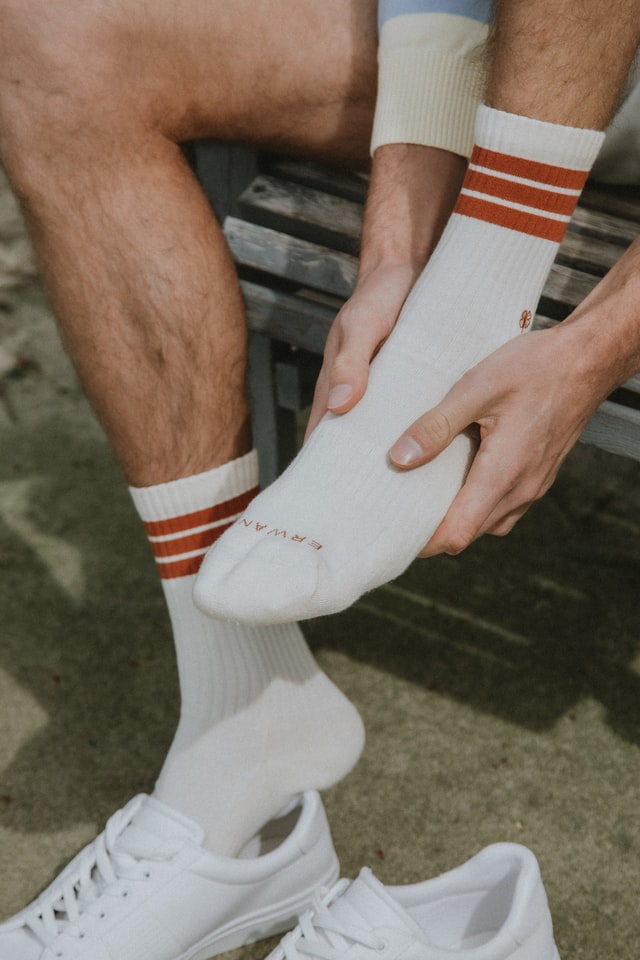


How many times have you wondered whether you should be using an ice pack or heating pad when it comes to an injury or muscle soreness? One of the most confusing things when addressing aches and pains is knowing when to use hot or cold therapy. If you have ever had an injury, delayed onset muscle soreness (DOMS), or have just been curious – you know the frustration. Before you feverishly search the web, we’re going to take you through when to use hot versus cold therapy, why, and simple at-home applications. After all, it isn’t as complicated as it may seem.
Heat Therapy, How & Why It Works:
Think of heat therapy as a muscle relaxer. Heat therapy works by increasing circulation and blood flow to a particular area due to increased temperature. By upping the temperature of the afflicted area, it can ease discomfort and increase muscle flexibility. Heat therapy can relax, loosen, and soothe muscles and potentially heal damaged tissue while providing pain relief. Though applying heat doesn’t completely rid the pain, it can lessen its severity. A general rule to keep in mind is to only use heat for muscle pain and stiffness.
Applications:
Heat therapy can consist of two modalities, dry and moist heat. Both types of heat therapy should be on the “warmer” side rather than “hot.” Dry heat includes items like heating pads, dry heating packs, and saunas. Moist heat, on the other hand, includes things like steamed towels, moist heating packs, and hot baths. According to this study moist heat may be slightly more effective for treating DOMS. Unlike cold therapy, applied heat for prolonged periods of time is beneficial. If you’re experiencing minor stiffness or tension, aim for fifteen to twenty minutes. Moderate to severe pain can benefit from longer sessions, like a warm bath, anywhere from thirty minutes to an hour.
Cold Therapy, How & Why It Works:
Cold therapy, on the other hand, works by reducing blood flow which decreases swelling and inflammation. It can also have a numbing effect on painful joints by stunning overactive nerves. Contrary to heat therapy, only use ice on acute injuries or pain, along with inflammation and swelling.
Applications:
There are numerous ways to apply cold therapy to an affected area. Various treatment options can include ice packs, coolant sprays, ice massage, ice baths, or cryotherapy chambers. However, individuals with sensory disorders should not use cold therapy at home because they may not be able to feel if damage is being done. Be sure to never use cold therapy on stiff muscles, joints, or if you have poor circulation. When using cold therapy, apply for short bursts of time several times a day. Aim for ten to fifteen minutes to ensure nerve, tissue, and skin damage won’t occur.
Bottom Line:
For that sneaky post-workout soreness, use heat. For injuries that swell and are painful, use cold therapy. If you pull a muscle, start by using cold therapy to reduce the swelling, but after ten to fifteen minutes switch to heat. Lastly, always consult with a medical professional to determine a treatment protocol.
Related Stories: How To Hack Your Body’s Soreness
怪我や筋肉痛に対して、アイスパックと温パッドのどちらを使うべきか疑問に思ったことは何回ありますか? 痛みに対処する際に最も混乱することの1つは、温熱療法または冷療法をいつ使用するかを知ることです。 けがをしたことがある、遅発性筋肉痛(DOMS)ある、などの時にイライラした事があると思います。 熱心にウェブを検索する前に、ホットセラピーとコールドセラピーをいつ使用するか、その理由、そして簡単な在宅アプリケーションについて説明します。 結局のところ、見た目ほど複雑ではありません。
温熱療法、それがどのようにそしてなぜ働くのか:
温熱療法は筋弛緩薬と考えてください。 温熱療法は、温度の上昇により特定の領域への循環と血流を増加させることによって機能します。 患部の温度を上げることで、不快感を和らげ、筋肉の柔軟性を高めることができます。 温熱療法は、筋肉をリラックスさせ、緩め、落ち着かせ、損傷した組織を治癒する可能性があると同時に、痛みを和らげることができます。 熱を加えることで痛みを完全に取り除くことはできませんが、その重症度を軽減することができます。 心に留めておくべき一般的なルールは、筋肉の痛みとこわばりのためにのみ熱を使用することです。
応用:
温熱療法は、乾熱と湿熱の2つのモダリティで構成できます。 どちらのタイプの温熱療法も、「温熱」ではなく「温熱」側に行う必要があります。 乾熱には、温湿布、乾熱パック、サウナなどのアイテムが含まれます。 一方、湿熱には、蒸しタオル、湿熱パック、温浴などが含まれます。 この研究によると、湿熱はDOMSの治療にわずかに効果的である可能性があります。 低温療法とは異なり、長時間熱を加えることは有益です。 軽度のこわばりや緊張を感じている場合は、15〜20分を目指してください。 中等度から重度の痛みは、30分から1時間のどこでも、温かいお風呂のような長いセッションの恩恵を受けることができます。
コールドセラピー、その仕組みと理由:
一方、冷療法は、腫れや炎症を減らす、血流を減らすことによって機能します。 また、過活動神経を驚かせることにより、痛みを伴う関節を麻痺させる効果もあります。 温熱療法とは異なり、炎症や腫れとともに、急性の怪我や痛みにのみ氷を使用してください。
応用:
患部に低温療法を適用する方法はたくさんあります。 さまざまな治療オプションには、アイスパック、クーラントスプレー、アイスマッサージ、アイスバス、または凍結療法チャンバーが含まれます。 ただし、感覚障害のある人は、損傷があったかどうかを感じることができない可能性があるため、自宅で低温療法を使用しないでください。 筋肉や関節のこわばり、血行不良の場合は、絶対に冷療法を使用しないでください。 コールドセラピーを使用する場合は、1日に数回短時間のバーストを適用してください。 神経、組織、皮膚の損傷が起こらないように、10〜15分を目指します。
結論:
運動後の痛みには、温熱を使用してください。 腫れや痛みを伴う怪我の場合は、低温療法を使用してください。 筋肉を引っ張る場合は、まず冷療法を使用して腫れを軽減しますが、10〜15分後に熱に切り替えます。 最後に、治療プロトコルを決定するために、常に医療専門家に相談してください。
関連記事: How To Hack Your Body’s Soreness